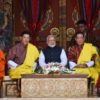Noise is an accepted part of human existence to the point that it’s getting dangerous. Statistics from the World Economic Forum from 2017 were bad enough. Six years later, the science is better, but the news is worse.
What’s really odd about noise pollution is the very vague, nebulous information in circulation.
There’s an understated flow of hard information about different types of noise pollution and a continuous feed of pretty grim if also rather generalized predictions. One of the issues here is that specific health risks usually aren’t explored in any degree of depth.
The health risks of noise pollution are more serious than anyone would expect from the muted information available. Harvard Medicine has a useful article about noise pollution that spells out the health issues.
Nor has there been much movement on noise pollution since. Harvard points out that the EPA started making noises about health risks 50 years ago. Like most information about any kind of pollution, it is prioritized downward.
This culture of selective deafness has added to the mix of problems with ignoring the obvious. New noise sources include industrial noise, overpowered woofers, ear pods, and overuse of headphones. When you’re hit with a loud noise, that sound is a physical force transferred as vibrations.
(For the record – Louder isn’t better and tends to distort sound quality. You don’t need high volumes at all.)
Unhealthy levels of noise start at 70 decibels according to the CDC. The CDC includes a helpful list of sources of possibly unhealthy sounds starting with common domestic appliances.
These technologies include:
- Higher cycle frequency noises which can affect the upper register of hearing,
- Anything blocking ear passages and generating noise could affect internal ear stresses and pressures.
- Lower wave near-infrasound noises that can resonate with delicate ear tissues.
The scale and range of devices and uses which make noises is also expanding. Leaf blowers and other high-cycle atrocities without mufflers are used regardless that people don’t normally wear sound protection. The user may be protected, but nobody else is.
The effectiveness of sound insulation is also highly dubious. Some residential buildings are good at blocking out external noise. Most aren’t. Some are echo chambers, amplifying sound. Any enclosed space with a hard reflective surface will do.

Health risks
Hearing loss – “Attrition by noise” isn’t quite as simple as it sounds, pun intended. Some level of hearing loss is “natural”, according to someone. In practice, the physiological type of hearing loss is the primary issue. Hearing loss may be caused by neurological issues, for example.
However – High levels of additional external stress don’t help any type of medical condition. There’s no doubt that intrusive levels of sound are physically as well as psychologically irritating. Noise is more stressful in an already stress-saturated world.
The WHO predicts that 2.5 billion people will have some form of hearing loss by 2050. That’s about 1 in 4 people worldwide.
Interestingly, the WHO doesn’t directly address noise pollution as such on that link above. It refers to OHS and “safe listening”, but not the wider practical issues regarding sources.
The overall picture is of a total lack of enforced policies. Nothing needs to be noisy. Sound insulation technologies have progressed a lot since 50 years ago.
The cost and health risks of managing 2.5 billion people with hearing loss in a deafening world are entirely avoidable.
Solution; stop the noise before it starts.
________________________________________________________________
Disclaimer
The opinions expressed in this Op-Ed are those of the author. They do not purport to reflect the opinions or views of the Digital Journal or its members.














